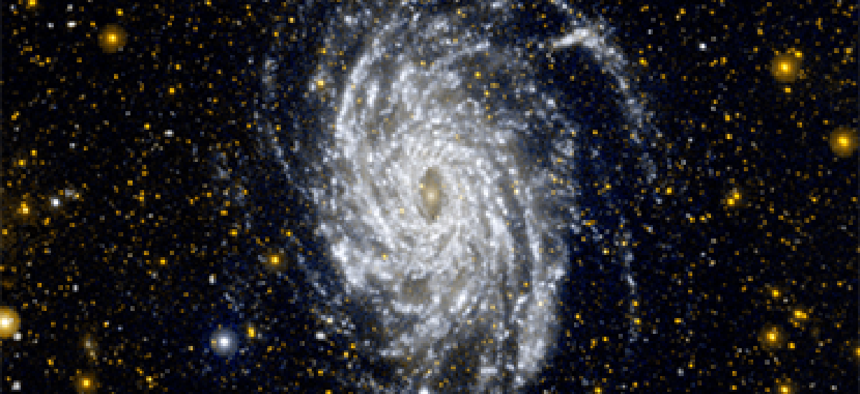NASA turns off GALEX space telescope

Launched in 2003, the telescope was part of an effort to learn more about the evolution of the universe.

The galaxy NGC 6744, photographed by the Galaxy Evolution Explorer space telescope. (NASA image)
A NASA space telescope that has dazzled astronomers with spectacular images of distant galaxies for the past decade, and set an asset management precedent back on Earth, was finally turned off on June 28.
Galaxy Evolution Explorer has completed its mission, NASA officials said in a statement. NASA launched GALEX in April 2003 on a 29-month mission to study the history of star formation in the universe. During its decade of service, the telescope studied galaxies, with the distances of space providing a kind of time-travel. Even at the speed of light, the images of some of the structures GALEX captured are billions of years old. The telescope provided views of a black hole swallowing a star. It also aided in confirming the nature of dark energy, according to NASA.
GALEX met its prime objectives, NASA officials said, and the mission was extended three times before being cancelled. In what the agency said was a first-of-its-kind arrangement, NASA loaned GALEX to the California Institute of Technology in May 2010. The institute used private funds to continue operating the satellite while NASA retained ownership. Under the arrangement, investigators from around the world used GALEX in their own research.
According to NASA, operators at Orbital Sciences Corp. in Dulles, Va., sent a signal to decommission GALEX at 3:05 p.m. on June 28. The spacecraft will remain in orbit for at least 65 years, then fall to Earth and burn up upon re-entering the atmosphere.
"GALEX is a remarkable accomplishment," said Jeff Hayes, NASA's GALEX program executive. "This small explorer mission has mapped and studied galaxies in the ultraviolet light we cannot see with our own eyes across most of the sky."
"In the last few years, GALEX studied objects we never thought we'd be able to observe, from the Magellanic Clouds to bright nebulae and supernova remnants in the galactic plane," said David Schiminovich, assistant professor of astronomy at Columbia University and a longtime GALEX team member who led science operations in the past year. "Some of its most beautiful and scientifically compelling images are part of this last observation cycle."
Data from the mission’s last year will be made public in the coming year, NASA officials said.
NEXT STORY: My 4th of July Celebration, 1965





